Beautiful Legends Of The Great Smoky Mountains: The Cherokee’s Little People Nunnehi And The Medicine Lake Ataga’hi
Ellen Lloyd - AncientPages.com - The Great Smoky Mountains have a rich cultural and natural history beyond their national park status. These mountains span from Virginia to northern Georgia along the Tennessee/North Carolina border, are steeped in Cherokee folklore, and encompass several significant national forests.
While the Great Smoky Mountains National Park is a well-known attraction, the mountain range offers much more. It includes four expansive wilderness areas: the Nantahala, Pisgah, Cherokee, and Chattahoochee national forests. These protected areas provide vast tracts of wilderness for exploration and conservation.
A fascinating aspect of the Smokies' lore is the connection to the Nunnehi, mythical "little people" in Cherokee tradition. An intriguing legend adds cultural depth to the region's already diverse heritage.
The characteristic "smokiness" of these mountains, which gives them their name, is a natural phenomenon that has intrigued visitors and residents alike. This feature and the importance of the mountains to the Cherokee people form a significant part of the area's identity.
This is a preview of our premium article available only to members of Ancient Pages.
Become a member to read more - Click here
If you are already a member and have logged in to your account, you can access the article here
See also:
Little People: Ancient Race That Pre-Dates Native Americans, Celts, And Other Settlers Worldwide
Legend: Strange Encounter With The Fairies In The Land Of The Light
More From Ancient Pages Library Of Ancient And Unexplained Mysteries
More From Ancient Pages
-
 2,500-Year-Old Mummy Workshop Discovered At Saqqara Necropolis, South Of Cairo, Egypt
Archaeology | Jul 18, 2018
2,500-Year-Old Mummy Workshop Discovered At Saqqara Necropolis, South Of Cairo, Egypt
Archaeology | Jul 18, 2018 -
 Dark And Light Sides Of Pax Romana: Great Political Slogan Introduced After Civil Wars
Ancient History Facts | May 20, 2023
Dark And Light Sides Of Pax Romana: Great Political Slogan Introduced After Civil Wars
Ancient History Facts | May 20, 2023 -
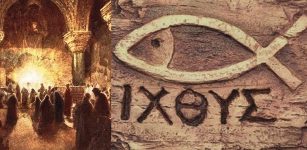 Mysterious Ichthys – Ancient Secret Christian Symbol With A Deep Meaning
Ancient Symbols | Mar 6, 2018
Mysterious Ichthys – Ancient Secret Christian Symbol With A Deep Meaning
Ancient Symbols | Mar 6, 2018 -
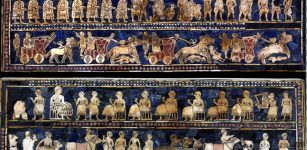 Image Of The Day: ‘The Standard of Ur – War And Peace’
Civilizations | Sep 7, 2015
Image Of The Day: ‘The Standard of Ur – War And Peace’
Civilizations | Sep 7, 2015 -
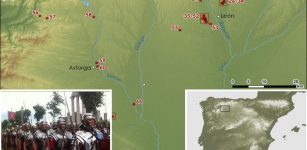 Satellite Images Of 66 New Roman Army Sites Show More Clues About One Of The Empire’s Most Infamous Conflicts
Archaeology | Dec 23, 2020
Satellite Images Of 66 New Roman Army Sites Show More Clues About One Of The Empire’s Most Infamous Conflicts
Archaeology | Dec 23, 2020 -
 200,000-Year-Old Stone Engravings Found In Marbella Could Rewrite The History Of Prehistoric Art
Archaeology | Mar 17, 2025
200,000-Year-Old Stone Engravings Found In Marbella Could Rewrite The History Of Prehistoric Art
Archaeology | Mar 17, 2025 -
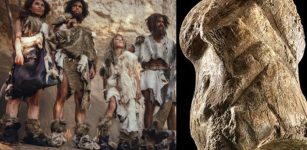 51,000-Year-Old Bone Carving Shows Neanderthals Were Artistic Long Before Humans Arrived
Archaeology | Jul 6, 2021
51,000-Year-Old Bone Carving Shows Neanderthals Were Artistic Long Before Humans Arrived
Archaeology | Jul 6, 2021 -
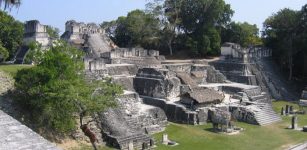 Ancient Maya Built Sophisticated Water Filters To Obtain Drinking Water
Archaeology | Oct 23, 2020
Ancient Maya Built Sophisticated Water Filters To Obtain Drinking Water
Archaeology | Oct 23, 2020 -
 LIDAR Discovers Two Remarkably Large Sites In The Amazon And Evidence Of Early Urbanism
Archaeology | May 25, 2022
LIDAR Discovers Two Remarkably Large Sites In The Amazon And Evidence Of Early Urbanism
Archaeology | May 25, 2022 -
 Can Peptide Droplets Explain The Emergence Of The First Living Organisms On Earth?
Archaeology | Oct 20, 2021
Can Peptide Droplets Explain The Emergence Of The First Living Organisms On Earth?
Archaeology | Oct 20, 2021 -
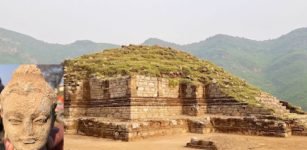 1,800-Year-Old Buddhist Stupa And Relics Discovered Near Bazira, The Ancient City Of Alexander The Great
Archaeology | Feb 11, 2022
1,800-Year-Old Buddhist Stupa And Relics Discovered Near Bazira, The Ancient City Of Alexander The Great
Archaeology | Feb 11, 2022 -
 3D Scans Reveal Secrets Of Rare Ancient Canoe From Lake Mendota In Wisconsin
Archaeology | Jun 3, 2022
3D Scans Reveal Secrets Of Rare Ancient Canoe From Lake Mendota In Wisconsin
Archaeology | Jun 3, 2022 -
 Mysterious Scottish Stone Circles On Orkney Were Used To Something Very Different Than Previously Thought
Archaeology | Sep 24, 2017
Mysterious Scottish Stone Circles On Orkney Were Used To Something Very Different Than Previously Thought
Archaeology | Sep 24, 2017 -
 Mysterious Rongorongo Script Remains Undeciphered – Does It Contain A Prophetic Warning?
Featured Stories | Mar 24, 2014
Mysterious Rongorongo Script Remains Undeciphered – Does It Contain A Prophetic Warning?
Featured Stories | Mar 24, 2014 -
 200-Year-Old Message In A Bottle Written By Archaeologist Unearthed In France
Archaeology | Sep 30, 2024
200-Year-Old Message In A Bottle Written By Archaeologist Unearthed In France
Archaeology | Sep 30, 2024 -
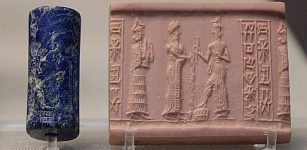 Shamash: Mesopotamian God Of Sun, Truth, Justice And Healing
Featured Stories | Jan 11, 2016
Shamash: Mesopotamian God Of Sun, Truth, Justice And Healing
Featured Stories | Jan 11, 2016 -
 Why Was The World’s Oldest Known Rune Stone At The Svingerud Grave Deliberately Broken Into Pieces?
Archaeology | Feb 3, 2025
Why Was The World’s Oldest Known Rune Stone At The Svingerud Grave Deliberately Broken Into Pieces?
Archaeology | Feb 3, 2025 -
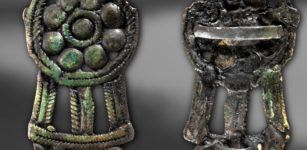 Hunter-Gatherer Metallurgy In The Early Iron Age Of Northern Fennoscandia Was Integrated And Advanced
Archaeology | Aug 15, 2023
Hunter-Gatherer Metallurgy In The Early Iron Age Of Northern Fennoscandia Was Integrated And Advanced
Archaeology | Aug 15, 2023 -
 Mystery Of The Neanderthals – Search For Traces Of Neanderthals’ Lives And Hints Of Their Demise
Archaeology | Sep 26, 2022
Mystery Of The Neanderthals – Search For Traces Of Neanderthals’ Lives And Hints Of Their Demise
Archaeology | Sep 26, 2022 -
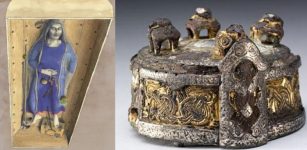 Mysterious Ancient Grave With Unusual Artifacts That Belonged To A Völva – Norse Female Shamans Did Exist
Featured Stories | Jul 2, 2017
Mysterious Ancient Grave With Unusual Artifacts That Belonged To A Völva – Norse Female Shamans Did Exist
Featured Stories | Jul 2, 2017



